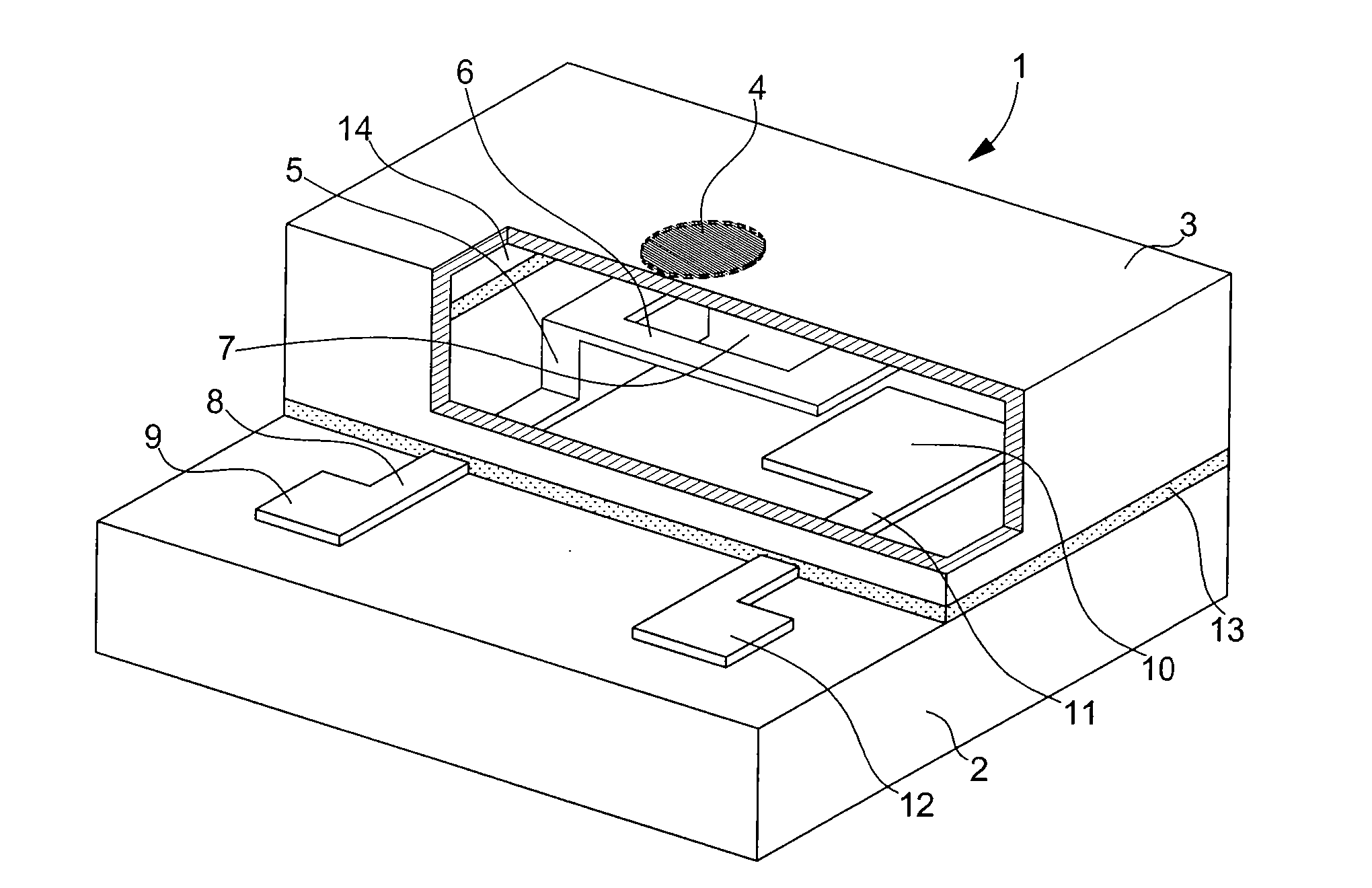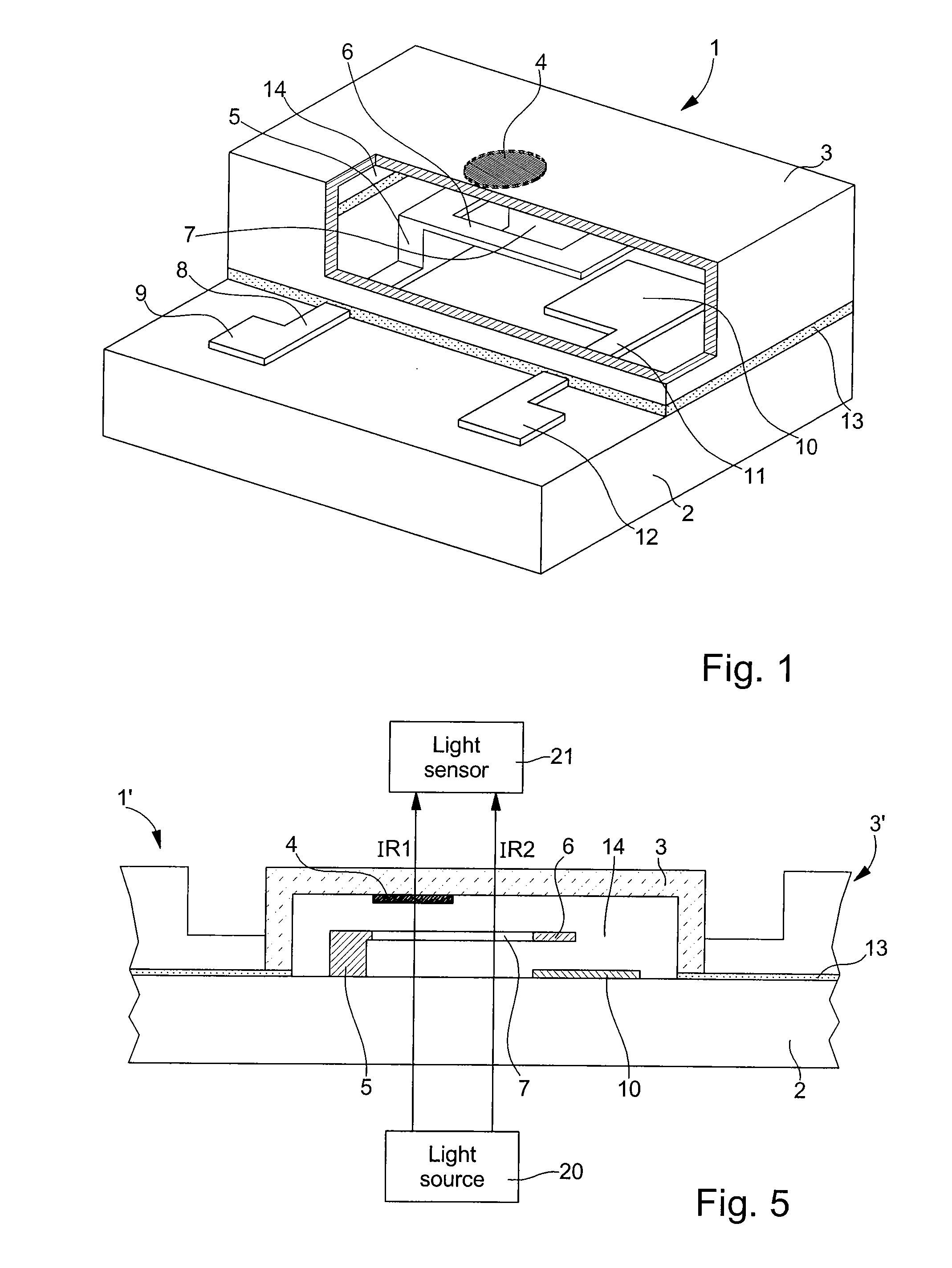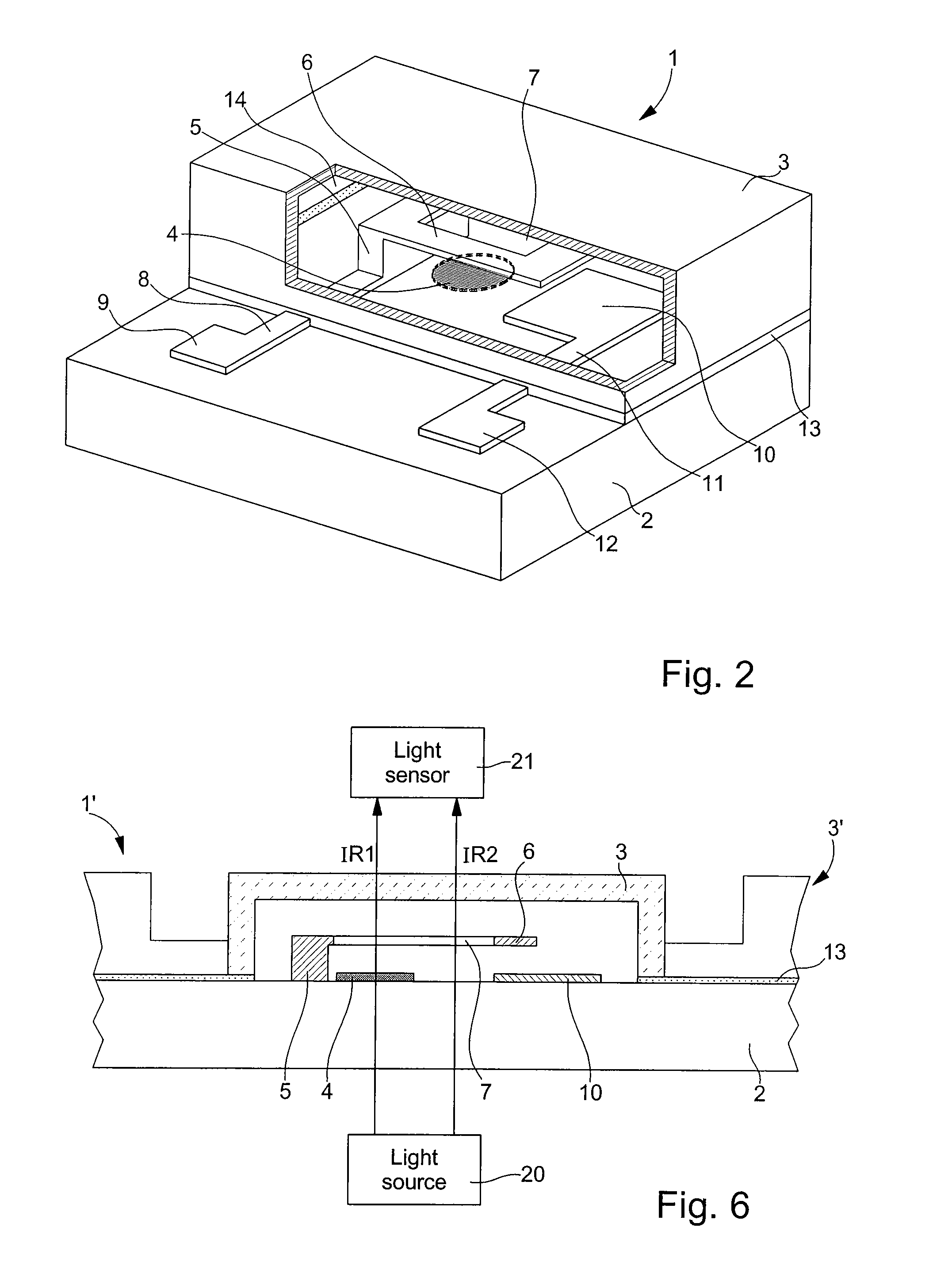Method Of Checking The Hermeticity Of A Closed Cavity Of A Micrometric Component And Micrometric Component For The Implementation Of Same
a micrometric component and closed cavity technology, applied in the direction of instruments, fluid-tightness measurement, measurement of fluid loss/gain rate, etc., can solve the problems of micro-cracks, the leakage detection threshold of a mass spectrometer system is of the order of 5, and the measurement gas introduced into the cavity is liable to partially escape. to achieve the effect of reducing the checking tim
- Summary
- Abstract
- Description
- Claims
- Application Information
AI Technical Summary
Benefits of technology
Problems solved by technology
Method used
Image
Examples
first embodiment
[0039] Micrometric component 1 includes a three-dimensional structure 5, 6 and 10 made over one portion of a substrate 2, a cap 3 for protecting the structure fixed onto a zone of substrate 2 and an indicator element 4 sensitive to a specific reactive fluid. The indicator element 4 is placed on a top part of the inner surface of cap 3 in this A closed cavity 14 is delimited by the inner surface of cap 3, the three-dimensional structure 5, 6 and 10 and the zone of substrate 2.
[0040] The volume of one cavity 14 of such a micrometric component 1 is of the order of 0.02 mm3 (1000 μm long, 200 μm wide and 100 μm high). This cavity 14 with a very small volume is preferably filled with an inert gas, such as argon, at a pressure close to atmospheric pressure.
[0041] The three-dimensional structure 5, 6 and 10 can be a magnetic micro-contactor. For technical details regarding the making of this micro-contactor, the reader can refer to EP Patent No. 0 874 379 by the same Applicant which is c...
second embodiment
[0053] It is possible to make the copper or titanium layer 4 by selective chemical etching or deposition techniques by evaporation under vacuum as explained hereinbefore. It should be noted that chemical etching in this second embodiment can also be used given that the copper layer is made on a flat surface of substrate 2, for example on an insulating layer.
[0054] Since the copper or titanium layers of this second embodiment are made during manufacturing of the wafers on the substrates, the manufacturing time of said wafers may be slower than the manufacturing time of the wafers of the first embodiment of the micrometric components. However, the dimensions of this copper or titanium layer for each cap 3 may be equal to those mentioned in the first embodiment.
[0055] With reference to FIG. 3, a thermal container 30 is shown in a very simplified manner for the explanation of the first steps of the method of checking the hermeticity of several micrometric components. Of course, all of ...
third embodiment
[0078]FIG. 7 shows a micrometric component 1 for implementing the method for checking hermeticity via electric means. It should be noted that those elements of FIG. 7, which are the same as those of FIGS. 1 and 2 bear identical reference signs. Consequently, for the sake of simplification, the description of these elements will not be repeated.
[0079] For checking the hermeticity of cavity 14 of micrometric component 1 via electric means, instead of the copper layer, there is provided a palladium resistor 15 housed entirely in said closed cavity. In order to have a significant resistor value capable of being easily measured by a measuring apparatus, the resistor describes a coil in the cavity. Of course, the length of the coil can be much greater than that illustrated in FIG. 7. This palladium resistor can be made by an electrolytic process, by chemical etching or any other known manner.
[0080] A third conductive path 16 connects a first end of resistor 15 to a third electric contact...
PUM
| Property | Measurement | Unit |
|---|---|---|
| pressure | aaaaa | aaaaa |
| thickness | aaaaa | aaaaa |
| thickness | aaaaa | aaaaa |
Abstract
Description
Claims
Application Information
 Login to View More
Login to View More - R&D
- Intellectual Property
- Life Sciences
- Materials
- Tech Scout
- Unparalleled Data Quality
- Higher Quality Content
- 60% Fewer Hallucinations
Browse by: Latest US Patents, China's latest patents, Technical Efficacy Thesaurus, Application Domain, Technology Topic, Popular Technical Reports.
© 2025 PatSnap. All rights reserved.Legal|Privacy policy|Modern Slavery Act Transparency Statement|Sitemap|About US| Contact US: help@patsnap.com



